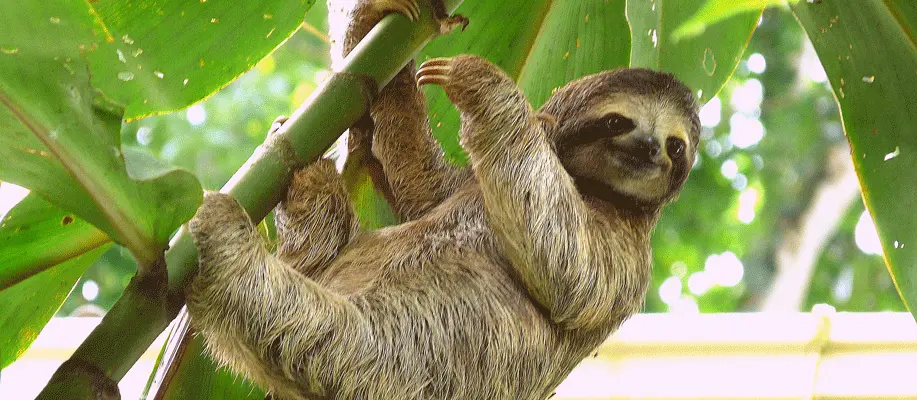We all know the basics of how our lungs work. We breathe in, filling both of our lungs with fresh air rich in oxygen that fuels our body before exhaling air and waste carbon dioxide. But in the animal kingdom, lungs come in a wide variety of shapes and sizes. Some animals can hold their breath up to 90 minutes, while others don't even need lungs to breathe! Here are a few of our favorite facts about animal lungs.
- Sloths can breathe upside-down for hours on end because their organs are connected to their rib cage with a "tape-like" tissue. If it wasn't for these adhesions that keep the lungs in place, an inverted sloth would spend up to 13 percent more energy on breathing.1
- Lungfish have a unique respiratory system, having both gills and a lung. It is the only type of fish to have both organs, and there are only six known species around the world. Many scientists even theorize that lungfish might be the missing link between when creatures a millennia ago left the sea to become land dwellers. Granddad the lungfish, who was known to be the world's oldest living aquarium fish, lived to be about 100 years old. He spent the last 82 years of his life at Chicago's Shedd Aquarium.
- Asthma and pneumonia affects animals just as it does humans. Cats and horses are the most prone to developing asthma symptoms.2 One sea otter at the Seattle Aquarium has even learned to use an inhaler to help manage her asthma.
- Dolphins can exhale air up to 100 mph. When dolphins inhale, they exchange up to 80 percent of the contents of their lungs, helping them to hold their breath up to seven minutes. By comparison, humans can only exchange 17 percent of the air in our lungs when we breathe.
- One turtle species is capable of obtaining up to 70 percent of oxygen through a process called cloacal respiration. Fitzroy River turtles have tiny, specialized papillae in their lower intestine, which are used for everything from urination and defecation to egg-laying. They also act somewhat like the alveoli in our lungs do, absorbing oxygen molecules into the bloodstream, allowing them to, essentially, breathe with their butts. 3
- Scientists believe whales may have evolved from prehistoric wolf-like mammals. As these primitive animals evolved, the ear-region of their skulls became specialized for underwater hearing, they improved the function of their lungs and they developed nostrils further back along the snout. This trend continued, eventually evolving into the "blowhole" we see today in current whales.4
- Elephants move their lungs by contracting and releasing their chest muscles. They breathe out an average of 310 liters of air per minute.
- Most snakes only have one functioning lung, and do not require the exchange of respiratory gasses to live. They also breathe by contracting muscles between their ribs.5
- A reindeer can brave the cold North Pole temperatures thanks to its nose, which warms the air it breathes before moving to its lungs.6
- Horses are obligate nasal breathers, which means they can only breathe through their noses. This allows for grazing with their heads down while separate nasal passages can breathe in air and sniff for potential predators.2
- One species of salamander lacks lungs, so it breathes by absorbing oxygen through its skin and the roof of its mouth.7
- The diving bell spider is able to breathe oxygen underwater by keeping air bubbles attached to its body with tiny, hydrophobic hairs.8
Blog last updated: October 15, 2025



